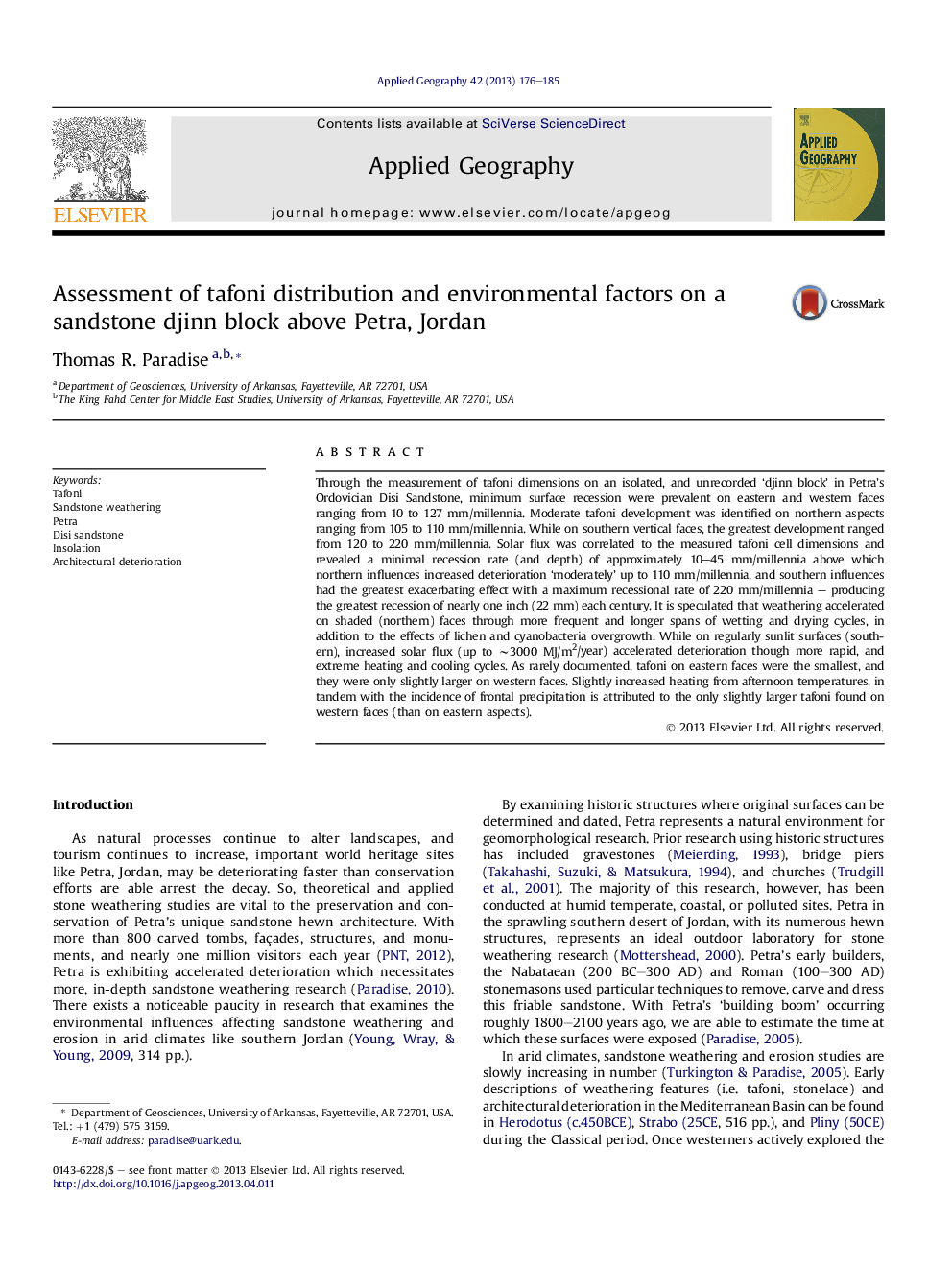| Article ID | Journal | Published Year | Pages | File Type |
|---|---|---|---|---|
| 6538919 | Applied Geography | 2013 | 10 Pages |
Abstract
Through the measurement of tafoni dimensions on an isolated, and unrecorded 'djinn block' in Petra's Ordovician Disi Sandstone, minimum surface recession were prevalent on eastern and western faces ranging from 10 to 127Â mm/millennia. Moderate tafoni development was identified on northern aspects ranging from 105 to 110Â mm/millennia. While on southern vertical faces, the greatest development ranged from 120 to 220Â mm/millennia. Solar flux was correlated to the measured tafoni cell dimensions and revealed a minimal recession rate (and depth) of approximately 10-45Â mm/millennia above which northern influences increased deterioration 'moderately' up to 110Â mm/millennia, and southern influences had the greatest exacerbating effect with a maximum recessional rate of 220Â mm/millennia - producing the greatest recession of nearly one inch (22Â mm) each century. It is speculated that weathering accelerated on shaded (northern) faces through more frequent and longer spans of wetting and drying cycles, in addition to the effects of lichen and cyanobacteria overgrowth. While on regularly sunlit surfaces (southern), increased solar flux (up to â¼3000Â MJ/m2/year) accelerated deterioration though more rapid, and extreme heating and cooling cycles. As rarely documented, tafoni on eastern faces were the smallest, and they were only slightly larger on western faces. Slightly increased heating from afternoon temperatures, in tandem with the incidence of frontal precipitation is attributed to the only slightly larger tafoni found on western faces (than on eastern aspects).
Keywords
Related Topics
Life Sciences
Agricultural and Biological Sciences
Forestry
Authors
Thomas R. Paradise,
